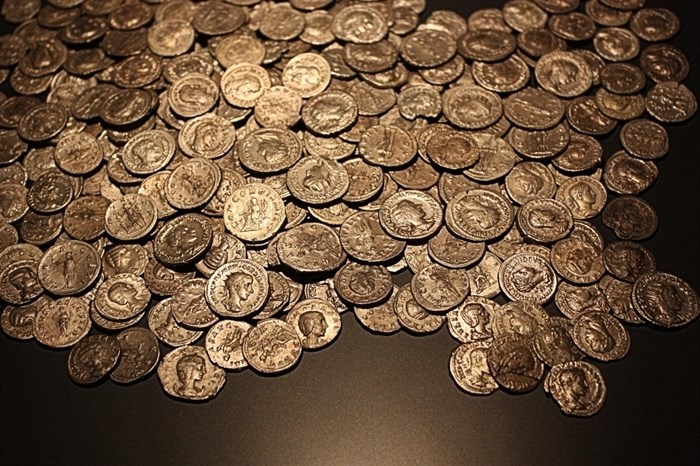
Image Credit: Pxhere
February 25, 2020 - 7:00 PM
A guest lecturer at UBC Okanagan says ancient coins unveil how Romans lived and tie to our monetary traditions today.
History professor Kenneth Harl, from Tulane University in New Orleans, is giving a presentation called The Changing Face of Roman Coinage, Feb. 26, from 3-5 p.m. at the UBCO library.
Through these coins, Harl will explain the history of two time periods, when the Roman republic became a monarchy after the Battle of Actium, in 31 BC and when emperor Constantine began to convert the Roman empire to Christianity in 312 AD, which still impacts Western civilization to this day, he said.
“The coins of the Roman empire show an enormous variety of information,” he said, adding as an example in roughly 200 AD, you can trace women’s hairstyles with the imperial family portraits on coins.
“That’s a dating device because women change fashion and men don’t,” he chuckled.
With ancient coins, “the government is clearly trying to project something, and the medium is widely disseminated, as you don’t have modern communications,” he said.
Many cities in the Eastern half of the Roman empire created their own money with inscriptions, and were used to symbolize debt repayments similar to our money today, he said.
READ MORE: Roman coins ID'd in Japanese ruins, but their origin baffles
Constantine used coins as a means to convert the empire to Christianity, he said. Constantine didn’t directly say the coins are Christian, but he began marking them with Christian symbols replacing pagan gods, he said.
“It’s a very subtle move.”
Harl was once told by a friend that Roman coins were like Tweeting, as “they’re abbreviated symbols.” He thinks of them as similar to brief radio transmissions.
They also can help assist with the reconstruction of statues as coins featuring gods and goddesses generally depict well-known statues, making it easier for architects to understand how a statue is supposed to look, he said.
The Bank of Canada is currently accepting applications for a new $5. In Canada, only the royal family is featured on currency while living, a symbol traced back to Rome.
“The U.S. as a republic will not have a portrait of a living person because that implies a monarchy,” Harl said. Emperor Julius Caesar put himself on a coin while living. He was assassinated less than a month later, he said.
“He’s a living man now on the coins of the republic and that (pushed) those conspirators over the edge,” Harl said.
Emperor Augustus had to be careful about how he was depicted on coins following Caesar’s reign, he said.
To this day, coins are still used in Western society as ways to communicate messages and reinforce public perceptions.
As an example in the U.S., people place value on coin sets. One set featured different states on the $25 cent piece. Some people wanted to collect the entire set of states, while others wanted to find their home state on the coins, he said.
To learn more about ancient Roman coins and their ties to history, register for the event through Eventbrite.
To contact a reporter for this story, email Carli Berry or call 250-864-7494 or email the editor. You can also submit photos, videos or news tips to the newsroom and be entered to win a monthly prize draw.
We welcome your comments and opinions on our stories but play nice. We won't censor or delete comments unless they contain off-topic statements or links, unnecessary vulgarity, false facts, spam or obviously fake profiles. If you have any concerns about what you see in comments, email the editor in the link above.
News from © iNFOnews, 2020